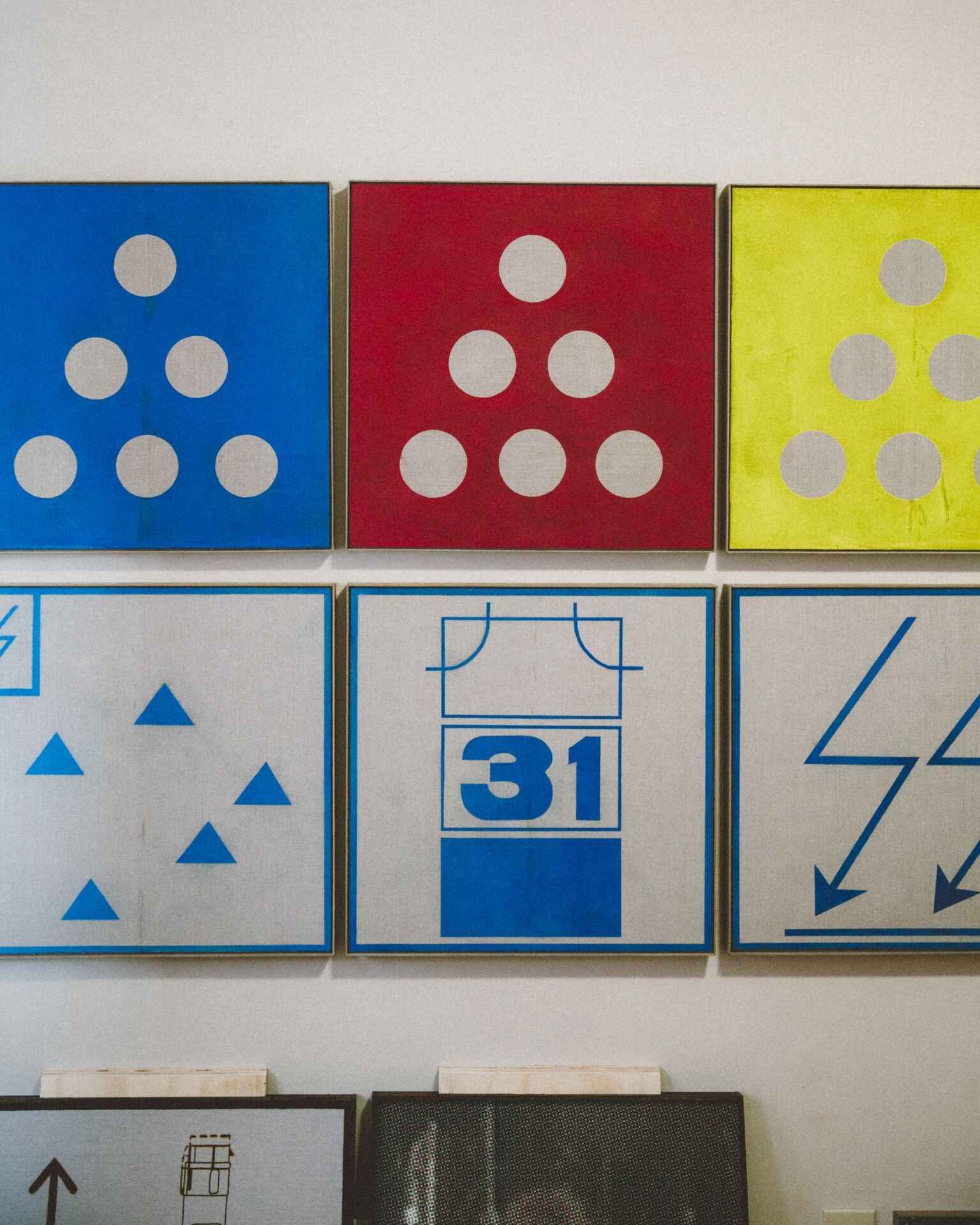Introducing St. Louis Artist Lyndon Barrois Jr.
Doe-eyed Prince in a bow tie. A curvy cardboard electric guitar. An old-school basketball shoe above a Xerox box. Eddie Murphy’s blank stare.“They are individual projects—they look different, and they take on different motivations,” Barrois reflects. “But ultimately, I’m interested in the same things all the time.” With a multi-disciplinary artistic practice that embraces the high, low and in-between, Lyndon Barrois Jr. is a scavenger of form, a taxonomist of cool. A GQ ad appears aside a recreated Disney still; James Naismith crosses with Constantin Brâncusi. Plumbing deeper into Barrois’ vast array of work, a common thread starts to peek from the seams: color itself is a dense construction, and no shade or hue can exist outside of the performance of race and gender.Moving back and forth from figurative painting and image-making to sculptural pieces, Barrois’ cognitive colorscapes call to question the often-subtle yet real ways that race—especially with relation to divergent masculinities—is created and disseminated. In a 2013 work, Barrois essentially re-dresses to redress—an image of two retired NBA players selectively sanded away, their uniforms replaced with formal three-piece suits. In a related series launched in 2017, faded scenes from mainstream movies foreground matters of racial stereotyping. “This is about how actors could address the audience, breaking the fourth wall,” he says, pointing to a still from “Hollywood Shuffle” and another from “Coming to America,” both hits from the mid-to-late ’80s. “I’m thinking about this move as a progressive gesture in Hollywood cinema, almost a political measure. When something very problematic was taking place on screen, Murphy was inviting viewers to recognize that this isn’t just a film. These are real issues.”But Barrois’ work feels more exploratory than didactic, more ruminative than overtly political. As one of three St. Louis-based artists featured in the Great Rivers Biennial exhibition at the Contemporary Art Museum in 2016, he assembled eight life-size sculptures on an indoor asphalt basketball court. Called “Of Color,” his installation represented two teams mid-scrimmage—the players at stake comprised mostly of recycled printing and toner packaging.“I was already dealing with the convergence of different masculine archetypes, all relevant to costume—athletes, superheroes and those in gentlemanly dress,” he explains of his vacillations between 2- and 3-D. “And then there was a point where I didn’t need the object anymore—the image was enough. Later, I actually started incorporating toner boxes as an accident, using them as pedestals.” In “Of Color,” shooting hoops became a meditation on the reductive—and seductive—practices of mass media.This exhibition and other recent shows frequently allude to CMYK (cyan, magenta, yellow, key) printing as a negotiation of color as illusion—relevant both to the depiction of race in visual media and how people of color are constructed in conceptually loaded ways. In his “KMUltra” series on view last year at Lambert International Airport, the hues are blown up in line with modified graphics from Konica-Minolta packaging. What seems bright and innocuous becomes less so when considering that “MKUltra” refers to a series of CIA experiments from the 1950s and 1960s in which chemical agents were used as a form of unsanctioned mind control.Barrois’ 2017 series “Stereotypography” extends consideration to the effects of font design, specifically iterations of Neuland, a font commonly used to represent any subject even tangentially related to African heritage. “When I first started using this font—merging the history of typeface and stereotype, commentaries on printing and construction—it was a way of working towards a formal agency,” he recounts. “This process of decision-making was not available for groups of people in the past. Nobody had a say in what font represented them.”Born in New Orleans in 1983 to two creative parents, Barrois received his BFA at the Maryland Institute College of Art in Baltimore, moving to St. Louis in 2011 to attend Washington University’s MFA visual-arts program. “It was interdisciplinary, which was exciting,” he says of his time at the university’s Sam Fox School of Design & Visual Arts. “It got me more interested in connecting dots across platforms.”Barrois is now connecting dots all over the map, with work included in more than a dozen national group exhibitions and four St. Louis-regional solo shows. In May of 2017, his work debuted at the South Dallas Cultural Center in a joint exhibition with St. Louis artist Kahlil Irving. Titled “One Step Ahead” (a reference to the eerily prescient 1965 Aretha Franklin song of the same title), the show probes the aftermath of the assassinations of Malcolm X and Martin Luther King Jr. “I’ve been pulling from images about Malcolm X without really using his image,” says Barrois of his ongoing process of collaging disjunctive glimpses of the time period.When taking in his work, one can move from the tragic death of Malcolm X to the spellbound face of a cartoon Mowgli. It can be a bit confusing as to how it all adds up, but Barrois’ vision nimbly balances a serious rigor with mindful levity. “My relationship to images has always been one of asking questions: When does the image take over, when do objects in image form work as a stand-in for the object?” he asks. In either case, Barrois’ brilliance is in navigating the poles between the blithe and intellectual, the historically heavy and the defiantly buoyant.This story originally appeared in ALIVE Issue 4, 2017. Purchase Issue 4 and become an ALIVE member.



